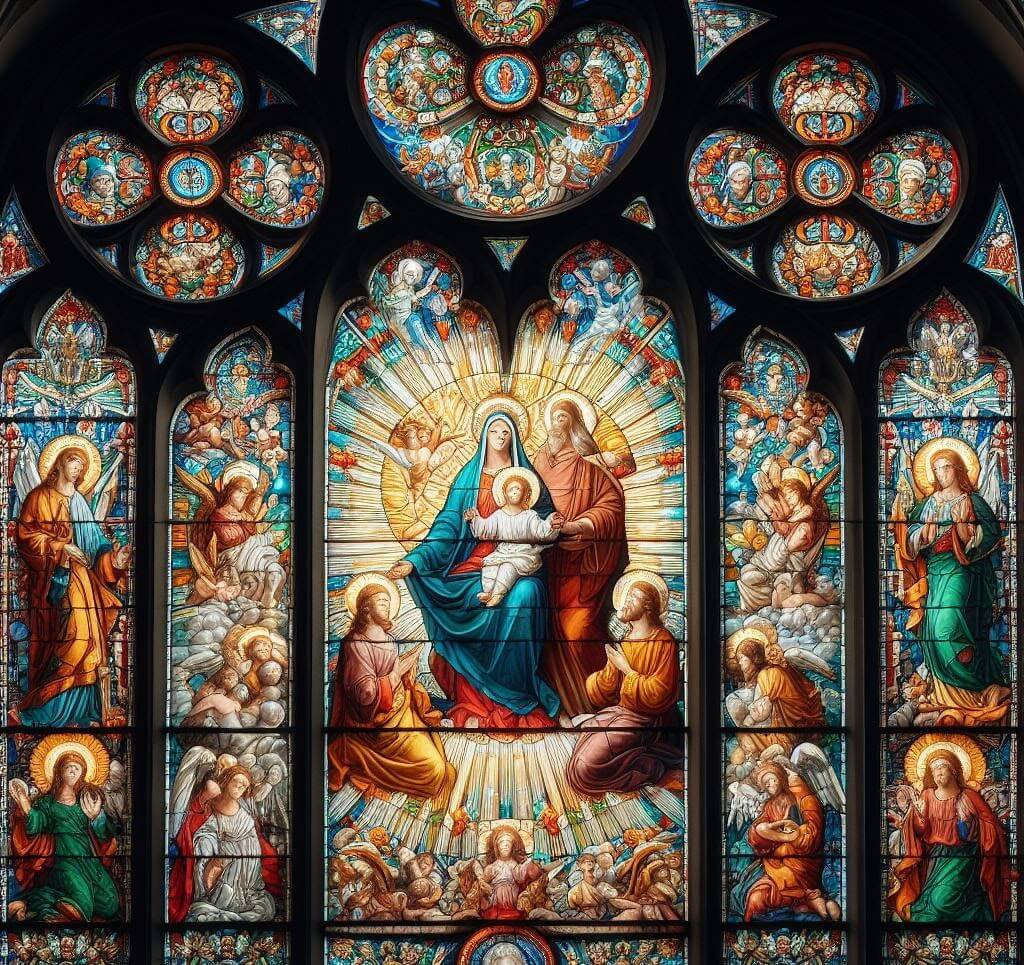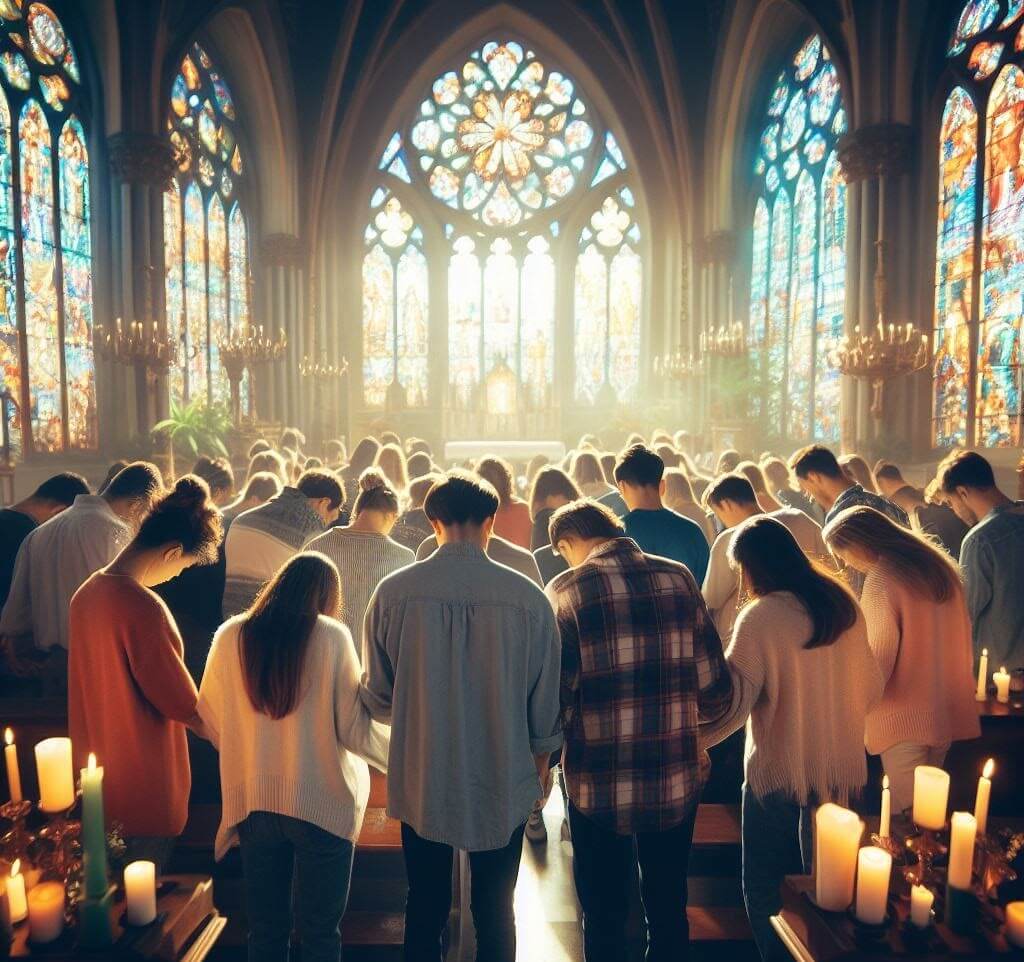In Christianity, a denomination is like a branch or subgroup within the broader Christian faith. These denominations share a common belief in Jesus Christ, but they often have different takes on the Bible, ways of worship, and how they’re organized.
Christian denominations are like different ways people see and practice their faith. They’ve come about because of historical, theological, and cultural differences that have built up over many years. These variations give each denomination its own unique outlook on the connection between God and the practice of faith.
At the core of each denomination are a set of core beliefs, which are usually explained in statements of faith or creeds. These beliefs revolve around essential Christian ideas, like what God is like, the divinity of Jesus, the role of the Holy Spirit, and how people find salvation. But the interesting part is how these beliefs are looked at and used in worship and everyday life, which is what makes each denomination different.
Denominations also have their own ways of doing things during their religious services. For example, Roman Catholicism really emphasizes the Eucharist and the sacraments, while the Eastern Orthodox Church values its ancient traditions and the use of religious images. On the other hand, Protestant denominations often keep their services simpler, focusing on preaching and congregational singing.
How these denominations are organized and governed also varies. In Roman Catholicism and Eastern Orthodoxy, there’s a hierarchy with bishops, priests, and deacons. Protestantism, on the other hand, often prefers more of a congregational or connectional structure. These differences have a big impact on how decisions are made and who has authority in the denomination.
Roman Catholicism
Roman Catholicism, one of the oldest Christian denominations, has a history that goes back over two thousand years. It has its beginnings in the early days of Christianity, with the city of Rome being a major center for early Christian communities.
One standout feature of Roman Catholicism is the Pope’s authority. The Pope, who is like the spiritual leader and the successor to Saint Peter, is a big deal in this denomination. This leadership, known as the Holy See, has a lot of influence on the beliefs, practices, and reach of the Catholic faith. This kind of centralized authority has helped shape and maintain the core beliefs and traditions of Catholicism over time.
A fundamental belief in Roman Catholicism is something called “transubstantiation.” This belief says that during the Eucharist, which is a special Christian ceremony, the bread and wine actually become the real body and blood of Jesus Christ. This unique belief sets Catholic worship apart, and the Eucharist is a central part of the Catholic Church’s religious life. Also, the Virgin Mary is highly respected, and saints are looked up to, highlighting the importance of their example and their role as intermediaries with God.
 Confession is another essential practice in Roman Catholicism. It’s a way for Catholics to admit their sins and seek forgiveness from God. In the process, they talk to a priest who provides guidance and support, which is a significant source of spiritual help for Catholics.
Confession is another essential practice in Roman Catholicism. It’s a way for Catholics to admit their sins and seek forgiveness from God. In the process, they talk to a priest who provides guidance and support, which is a significant source of spiritual help for Catholics.
Roman Catholicism also has a rich history, playing a big role in both religious and political events. The Vatican, which is like the religious headquarters for Catholicism, has had a significant impact on Western civilization. It has been involved in religious diplomacy, theological advancements, and has dealt with complex relationships with worldly powers throughout history.
Eastern Orthodoxy
Eastern Orthodoxy, an ancient Christian tradition that sprouted from the early Christian community, carries a rich tapestry of beliefs and customs that set it apart from other Christian groups. Its roots stretch back to the early days of Christianity when the earliest Christian communities formed in the Byzantine and eastern regions of the Roman Empire.
One thing that stands out in Eastern Orthodoxy is its focus on the mystical and personal side of faith. Orthodox Christians place great importance on theosis, which is all about getting closer to God through spiritual transformation. The mystical connection with the Divine is at the heart of Orthodox worship and spirituality. The worship services involve detailed rituals that create a sense of respect and wonder.
Iconography is another big part of Eastern Orthodox Christianity. Icons are like religious pictures of Jesus, the Virgin Mary, and various saints. They’re not just art; they’re like windows to the divine. They help people connect with what’s sacred. During their worship, they use these icons, along with meaningful songs and incense, to create an experience that lifts the worshiper to a higher spiritual level.
The way the Eastern Orthodox Church is organized is quite different from Roman Catholicism. They have a system called autocephaly, which means that individual churches can govern themselves to some extent. The leaders are the patriarchs and bishops, and they have authority, but it’s less centralized compared to the Pope’s authority in Roman Catholicism.
The way they conduct their religious services in Eastern Orthodoxy is deeply rooted in ancient practices. Their main worship service, the Divine Liturgy, combines readings from holy texts, singing, and symbolic acts. It all works together to make the worshiper feel like they’re having a special connection with God.
Eastern Orthodoxy’s commitment to ancient traditions and theological ideas gives it a sense of continuity with early Christianity. The early theologians, like Athanasius, Basil the Great, and John Chrysostom, still have a big influence on what Orthodox Christians believe. These theologians have shaped their understanding of key concepts like the Trinity, the Incarnation, and how people are saved.
Protestantism
Protestantism, a significant Christian movement that began in the 16th century, came about because some people strongly wanted to change the Roman Catholic Church. Influential figures like Martin Luther, John Calvin, and others led what’s known as the Protestant Reformation. This period marked a big change in Christian history and showed important differences in beliefs, church organization, and teaching. It led to the formation of various Protestant groups.
A key belief in Protestantism is “sola scriptura,” which means they believe the Bible is the only source of authority when it comes to faith and how they live as Christians. This idea challenged some practices in the Catholic Church, like selling forgiveness for sins, and encouraged people to go back to the Bible as their main guide for their faith. This focus on the Bible remains at the core of Protestant beliefs, promoting a personal connection with the Bible for all believers.
Protestants also believe in “justification by faith alone” (sola fide). This means that they think people are saved not by what they do but by having faith in Jesus Christ. It’s a big belief and changes how they see their relationship with God, putting a lot of emphasis on God’s kindness and the free gift of salvation.
The Reformation didn’t only affect beliefs but also how churches were organized. Many Protestants moved away from the Catholic Church’s hierarchy, where power was concentrated at the top, and instead adopted different systems like having the congregation decide or having groups of leaders. This led to many different Protestant denominations, each with its way of organizing and way of worship.
Inside the Protestant family, there’s a wide range of denominations, each with its own way of looking at things and how they worship. Lutherans, for instance, follow the teachings of Martin Luther and stick to traditional worship practices. The Reformed groups, influenced by John Calvin, focus on God’s power and often have simpler worship. Baptists emphasize adult baptism through immersion and let the congregation make decisions, while Anglicans keep a more traditional way of worship that respects both the Bible and tradition.
 The diversity within Protestantism shows how they value personal interpretation and letting each group make its decisions. It’s led to many denominations and traditions, each contributing its unique point of view and way of worship, while still agreeing on the important things like believing in Christ and the Bible’s authority.
The diversity within Protestantism shows how they value personal interpretation and letting each group make its decisions. It’s led to many denominations and traditions, each contributing its unique point of view and way of worship, while still agreeing on the important things like believing in Christ and the Bible’s authority.
Theological Diversity and Modern Developments
The theological landscape within Christianity is not static but constantly evolving, reflecting the diverse interpretations of core beliefs and responses to the challenges of the modern world. The exploration of Christian denominations and traditions cannot be complete without considering the theological diversity and contemporary developments that continue to shape the faith.
Theological diversity within Christianity can be seen not only among different denominations but also within them. This diversity is a result of historical and cultural contexts, varying interpretations of scripture, and evolving doctrinal emphases. For example, even within a single denomination like Protestantism, there can be a wide spectrum of theological beliefs, ranging from the conservative, fundamentalist perspective to the more liberal and progressive views. This diversity often leads to theological debates and discussions that stimulate intellectual and spiritual growth within the faith.
Modern developments in Christianity have also given rise to new movements and expressions of the faith. Among these is the Pentecostal and Charismatic movement, which emphasizes the active presence of the Holy Spirit and the manifestation of spiritual gifts. Speaking in tongues, healing, and prophetic utterances are integral parts of worship in these traditions, resulting in highly emotive and experiential forms of Christianity.
The ecumenical movement has sought to bridge the gaps between different Christian traditions and denominations. Ecumenism promotes dialogue and cooperation among diverse Christian groups, with the aim of fostering greater unity and understanding within the global Christian community. These efforts have led to theological discussions that aim to reconcile theological differences and promote a sense of shared purpose and mission.
In recent decades, there has been a growing emphasis on social justice and the role of the Church in addressing societal issues. Many Christian denominations and organizations have become actively involved in advocating for the marginalized, addressing environmental concerns, and promoting peace and reconciliation in conflict-ridden regions. The integration of social justice into Christian theology and practice represents a contemporary development that seeks to apply the teachings of Christ to the complex challenges of the modern world.
Technology and the digital age have introduced new avenues for worship and religious expression. Online church services, podcasts, and social media have become tools for reaching wider audiences and fostering a sense of global Christian community. These modern developments are reshaping the way Christians connect with their faith and with one another.
